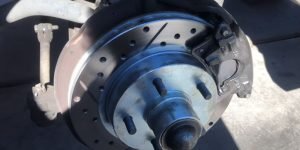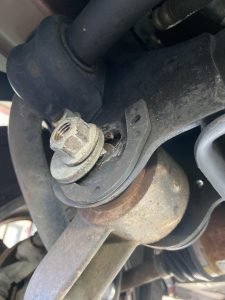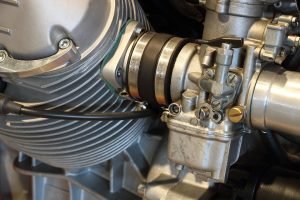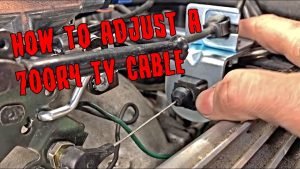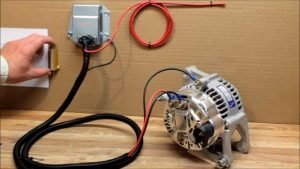
Contents
How to Replace Your Car’s Air Filter: A Step-by-Step Guide
Is your car’s air conditioning blowing hot air? Is your engine struggling to accelerate? A clogged air filter could be the culprit! Luckily, replacing your car’s air filter is a relatively simple DIY task that can save you money and improve your vehicle’s performance. This guide will walk you through the process, step-by-step.
🛒 Recommended Product
Why Replace Your Air Filter?
Your car’s air filter protects your engine from dirt, dust, pollen, and other debris. A dirty air filter restricts airflow to the engine, leading to:
- Reduced fuel efficiency
- Decreased engine performance
- Increased emissions
- Potential engine damage
How Often Should You Replace Your Air Filter?
Most manufacturers recommend replacing your air filter every 12,000 to 15,000 miles or every 12 months, whichever comes first. However, driving in dusty or dirty conditions may require more frequent replacements. Inspect your air filter every 3,000 to 5,000 miles to check its condition. If it’s visibly dirty, it’s time for a change.
Tools You’ll Need:
- New air filter: Make sure to purchase the correct filter for your vehicle’s make and model. Your owner’s manual will specify the correct filter type.
- Screwdriver (likely Phillips head): Most air filter housings use screws.
- Gloves (optional): To keep your hands clean.
- Flashlight (optional): To illuminate the air filter housing, especially in darker areas.
Step-by-Step Instructions:
-
Locate the Air Filter Housing: Consult your owner’s manual for the precise location. It’s usually found under the hood, often near the engine, but sometimes in other less accessible areas depending on the vehicle’s design.
-
Open the Air Filter Housing: This typically involves removing a few screws or unclipping a retaining clip. Be gentle to avoid breaking any parts.
-
Remove the Old Air Filter: Carefully lift out the old air filter. Inspect it closely. If it’s significantly dirty or clogged, you’ve made the right decision to replace it.
-
Inspect the Air Filter Housing: Take this opportunity to clean the air filter housing using a shop vacuum or compressed air. This will help ensure a cleaner environment for your new filter. Avoid using harsh chemicals.
-
Install the New Air Filter: Ensure the new air filter is oriented correctly. Most filters have an arrow indicating the direction of airflow. Match this arrow with the airflow direction indicated on the housing. Gently place the filter into the housing.
-
Close the Air Filter Housing: Replace the screws or clips to secure the housing. Make sure everything is securely fastened.
-
Start Your Car: Start your car and let it run for a few minutes. This will allow the new filter to begin its job. Listen for any unusual sounds. If you hear any unusual noises or feel any significant performance differences after this, double check your work.
Common Mistakes to Avoid:
- Installing the filter incorrectly: Pay close attention to the airflow direction.
- Forcing the filter into place: If it doesn’t fit easily, double-check its orientation.
- Not cleaning the housing: A clean housing will help the new filter last longer.
- Using the wrong air filter: Always use the correct filter for your vehicle.
- Over-tightening screws: This can damage the housing.
Tips for Success:
- Take pictures: Before you start, take pictures of the air filter housing and its components. This will help you remember how to reassemble everything.
- Consult your owner’s manual: Your owner’s manual is your best resource for specific instructions and diagrams related to your vehicle’s air filter.
- Work in a well-lit area: This will make it easier to see what you’re doing.
Replacing your car’s air filter is a straightforward process that can significantly benefit your vehicle’s performance and longevity. By following these steps and avoiding common mistakes, you can easily perform this essential maintenance task yourself!
🛒 Recommended Product
FAQ
Q. What type of air filter do I need for my car?
A. You’ll need to find the correct air filter for your specific car make, model, and year. Your owner’s manual will specify the correct filter type and size, or you can find this information online through a parts store website by entering your vehicle details. Don’t guess; using the wrong filter can damage your engine.
Q. How often should I replace my car’s air filter?
A. Generally, it’s recommended to replace your air filter every 12,000 to 15,000 miles, or every 12 months, whichever comes first. However, driving in dusty or dirty conditions may necessitate more frequent replacements. Inspect your filter more often if you notice a decrease in engine performance or fuel efficiency. A visibly dirty filter needs replacing immediately.
Q. What tools do I need to replace my car air filter?
A. You’ll typically only need a screwdriver (possibly a Phillips head), and possibly a small flashlight to help see inside the air filter housing. In some vehicles, no tools are required.
Q. Where is my car’s air filter located?
A. The air filter housing is usually located in the engine compartment, often near the front of the engine. It’s typically a rectangular or cylindrical plastic box with a noticeable air intake hose connected to it. Consult your owner’s manual for the exact location in your specific vehicle as this can vary considerably.
Q. What should I do after installing the new air filter?
A. After installing the new air filter and reassembling the housing, make sure everything is securely fastened and that there are no loose parts. Check for any leaks around the air intake and ensure the air filter housing is properly closed. You might want to briefly check your engine’s performance to ensure there are no issues.
Q. What happens if I don’t replace my air filter?
A. A dirty air filter restricts airflow to the engine, reducing engine performance, fuel efficiency, and potentially causing damage to engine components over time. It can also lead to increased emissions. Ignoring a clogged air filter can eventually result in costly repairs.
Related Articles
How to Upgrade Car Stereo System
How to Upgrade Your Car Stereo System: A Step-by-Step Guide Want to transform your driving experience with a killer sound system? Upgrading your car s…
How to Reset Check Engine Light after Repair
How to Reset Your Check Engine Light After a Repair: A Step-by-Step Guide That dreaded Check Engine light illuminating on your dashboard can be stress…
How to Fix a Dent in Your Car Without Professional Help
How to Fix a Dent in Your Car Without Professional Help: A DIY Guide Got a frustrating dent in your car? Before you shell out big bucks for profession…
Affiliate Disclosure: As an Amazon Associate, I earn from qualifying purchases made through links on this site.


